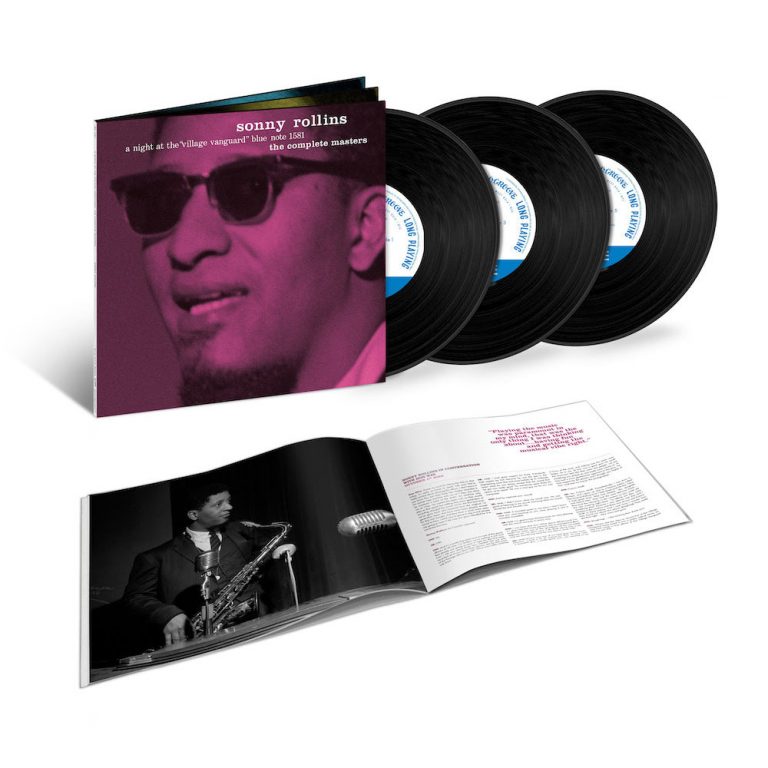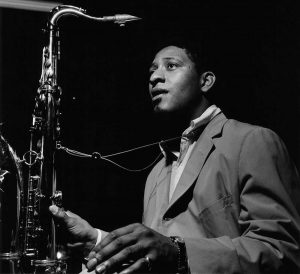As Sonny Rollins stepped up to the mic to give his introductions at iconic Manhattan club Village Vanguard in 1957, he already had the reputation as one of the best tenor players operating at the time. He was in awesome form, seemingly reworking show tunes and popular songs of the day into his own style at will. The loose yet masterful way of improvisation that he had developed was long his own, soaking up influences as he had in his formative years playing alongside masters like Charlie Parker, Thelonious Monk and Bud Powell.
In the couple of years leading up to this date at the Village Vanguard, Rollins had found a new lease of life as a result of getting clean. Rollins credited Parker not just with musical inspiration, but also with helping him get off drugs around the time he recorded the “Collector’s Items” album with Miles Davis.
“That was a major turning point in my life,” admits Rollins in an interview with drummer Art Taylor. “Bird found out that I had been indulging. He really didn’t like it. I realized I must be doing the wrong thing. I subsequently got myself off drugs when he showed me that wasn’t the way to go.”

SONNY ROLLINS A Night At The Village Vanguard
Available to purchase from our US store.After a stay at the US Public Health Service Hospital in Kentucky, Rollins returned to playing with a burst of creative energy, recording a series of albums as bandleader for Prestige, as well as featuring in groups with Miles Davis, and as part of Clifford Brown and Max Roach’s influential hard bop quintet. Rollins’ album “Saxophone Colossus” in 1956 marked him out as a giant on the instrument, a composer with a unique voice and a bandleader with the highest standards.

Rollins might have been a hard taskmaster, but there was no one he was harder on than himself, and he regularly took breaks from his career to develop himself musically. One particular advancement at this time was his formation of the piano-less saxophone trio. By stripping away the piano and the chordal element of the group, Rollins freed up not just tonal space, but unleashed rhythmic and harmonic possibilities as well. It put the saxophone front and centre and gave Rollins the freedom to play what was in his head.
“A Night At The Village Vanguard” lands right in the middle of a triplet of Rollins’ piano-less albums recorded between 1957 and 1958, between “Way Out West” and “Freedom Suite”. Not only is it a vital document of his own development, but it also marked a shift in the sound of jazz in general, as it veered away from the harmonic foundations of bebop towards looser, freer horizons.
These trio experiments were with several different players, and Rollins admits he had a high turnover of musicians at that time. But for this date at the Village Vanguard, he settled on Pete LaRoca on drums and Donald Bailey on bass for the afternoon set, and Elvin Jones with Wilbur Ware on bass for the evening set. While both pairs approached the material in their own way, their prerogative was the same – namely to provide a foundation while responding to Rollins’ fast runs and flights of melodic fancy.
The results are one of the greatest live jazz albums ever recorded, all the more notable for the looseness and nonchalance with which it’s performed. Rollins is in a typical laid-back and playful mood, often characterized in his solos by a pause preceding an explosive flurry of notes. Rollins lends his rich tone to weave a masterclass in extended, uplifting improvisations, particularly on versions of “A Night In Tunisia”, “Get Happy” and “Softly As A Morning Sunrise.”
Rollins considered Charlie Parker and Bud Powell to be geniuses who could do no wrong. “I’m not as great a musician as Bird or Bud,” he admits, “but playing with them and being around them perhaps helped me attempt to reach that level.”
“A Night At The Village Vanguard” captures the great jazz saxophonist in full flow, and it’s safe to say, this is one of Rollins’ attempts that reached the exceptional heights he strived for.


SONNY ROLLINS A Night At The Village Vanguard
Available to purchase from our US store.Read on… How Bud Powell Inspired Bebop Greatness
Max Cole is a writer and music enthusiast based in Düsseldorf, who has written for record labels and magazines such as Straight No Chaser, Kindred Spirits, Rush Hour, South of North, International Feel and the Red Bull Music Academy.
Header image: Sonny Rollins. Photo: Francis Wolff / Blue Note Records.


